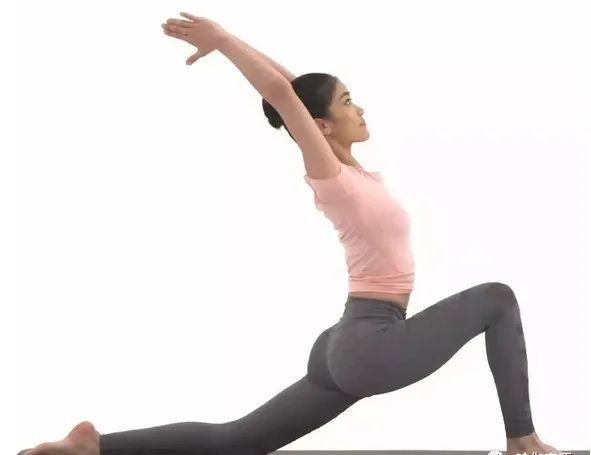Yoga crescent lunge posture stretches the hip flexors and quadriceps femoris.

This is a beneficial anti stretching pre load exercise, such as cycling and running enthusiasts, and people who like to sit for a long day.

This exercise is a good offsetting posture.
It can also open the chest, shoulders, and torso.
This position can be practiced to establish our balance and stability.
As an open chest exercise, it is considered energetic.
Open your chest, shoulders and torso.
This is a beautiful yoga pose This exercise posture can be practiced almost all over our body, especially to the parts of our daily life that are seldom active.
However, when many of our students practice this pose, the most common problem is pressing the knee, causing pain.
Why does the practice of crescent lunge cause knee pain? The common problem is that we are eager for success.
Yoga crescent lunge requires us to stretch our hamstrings, open our groins, and flex our hips.
Beginners often have no relevant ability and flexibility in these parts, so they must adjust their mentality and practice step by step.
Be sure not to deepen your front knee quickly, and learn to listen to your body when you practice moving.
Make sure the front knee joint is above the ankle.
Even when doing the lunge, avoid overstretching the range of motion of the knee joint.
If you find any discomfort in your knee, be sure to stop and step back to avoid further pain and possible injury.
Keep your back foot straight and don’t let it sneak inward.
Make sure that the front knee joint is kept above the ankle.
Step by step, practice the yoga crescent lunge.
The training goal of this pose is: hip flexor, quadriceps femoris, ankle core balance, spine flexion.
The training goal of this yoga pose is: hip flexor, quadriceps femoris, ankle, core balance, spine flexor, crescent lunge (Anjaneyasana), which is the deep extension of hip flexor and quadriceps femoris.
It can also be a back bend if you like.
This is a common classical pose in yoga, which often appears in many series of yoga.
If you feel knee pain during exercise, you can try different adjustments.
1.
Move the center of gravity forward as far as possible to keep the upper thigh and knee joint more rested.
This slight adjustment may be sufficient to relieve discomfort in the knee.
2.
Try not to press the weight on the knee, stretch the front of the thigh, and it is important to expand the hip, which can relieve the compression at the knee.
It is important to stretch the front of the thigh and expand the hips.
3.
You can also try to increase the cushion by folding the cushion or support the knee with a blanket.
4.
If balance is a problem, put your hands on the ground, and use yoga bricks to support your hands, so as to provide space for your body and avoid the weight pressing your knees.
If balance is a problem, it is also an option to put your hands on the ground and your palms on the front of your thighs.
It is also an option to put the palm on the front of the thigh.
6.
Putting the back toes up can help our body feel balanced and supported.
How to correctly practice yoga crescent lunge from a low lunge with your back toes up.
Put your back knee (here’s your left knee) on the mat.
If the knee is very sensitive, you can put a blanket under the knee, or fold the yoga mat to get more cushioning.
Put your hands on your right knee, with your right knee perpendicular to your right ankle.
Inhale, raise your arms above your head, keeping your arms in line with your ears.
In order to deepen the lunge, when the hips move forward, the feet firmly step into the ground.
As you do this, stretch the front of your left thigh close to the floor.
The inner side of the thigh is formed into adduction and extension, which can avoid squeezing the joints.
If you feel comfortable, you can bend your upper spine back naturally.
Exhale, put your hands down, adjust your front feet, and relax.
Repeat on the left.
1.
The pelvis rolls back slightly, so that the tailbone points to the ground, to avoid excessive forward movement of the lumbar spine.
Note that in most knee bending yoga postures, you should be careful not to put the knee in front of the ankle, because that is a fragile position of the knee…

